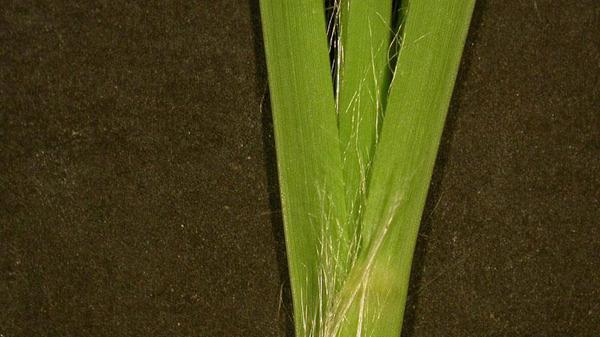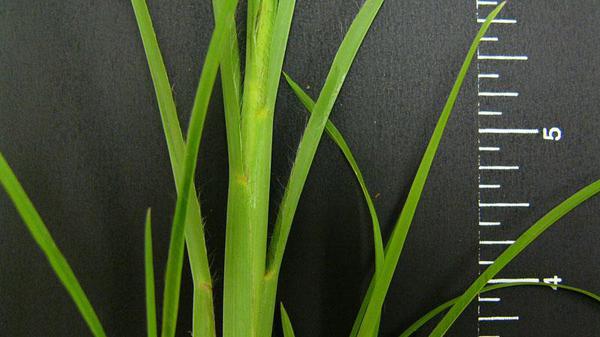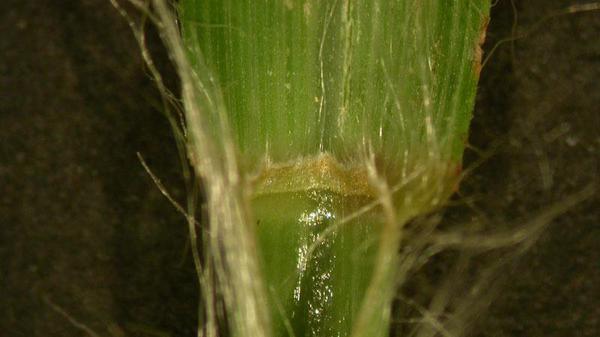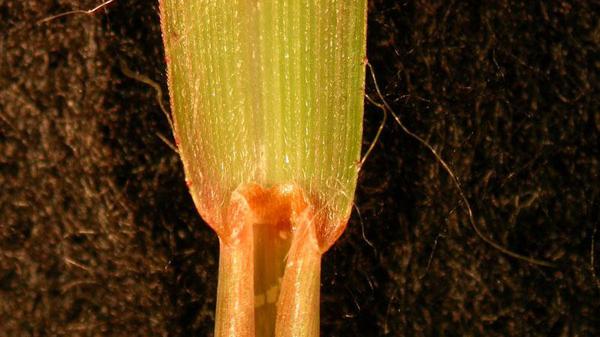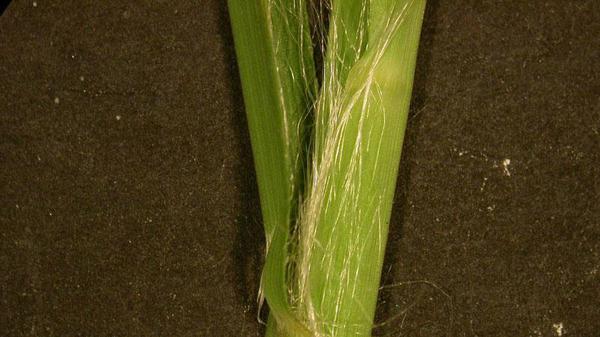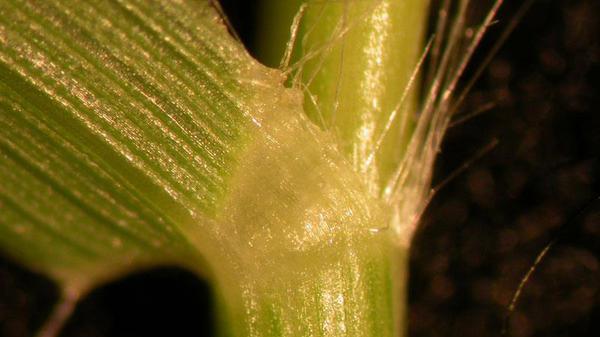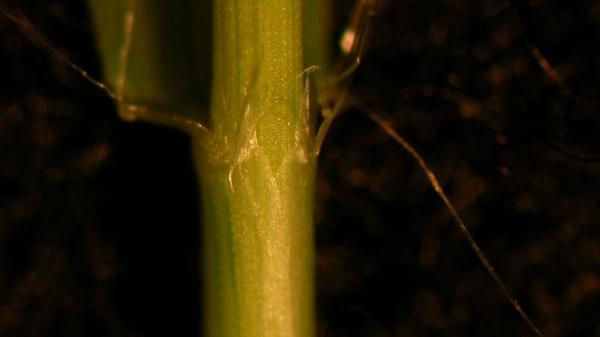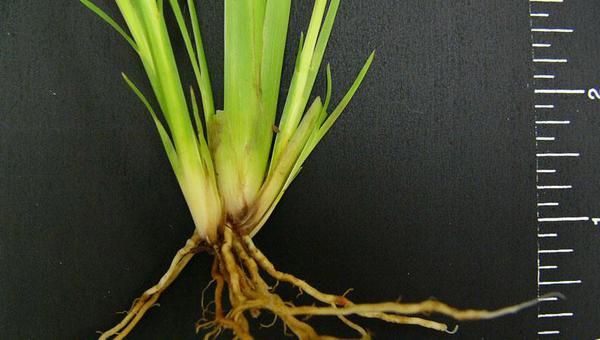Description
Broomsedge (Andropogon virginicus) is a perennial weed frequently found in fields, along roadsides, and in openings to forests and pastures. It can be distinguished from other grasses by the flattened leaf sheaths which have obvious leaf hairs. Leaves with folded vernation arise from a basal crown. Immature plants are bluish-green, however mature leaves turn light brown and appear to be dry. These upright leaves remain standing throughout the year.
Cultural Control
Perennial grass weeds are not desirable as turfgrass species under any conditions. Therefore, every effort should be made to prevent these weedy grasses from becoming established in turf, as selective control measures are usually difficult. Selection of adapted turfgrass species and cultivars and the use of cultural practices are important in minimizing weedy grass encroachment and competition. Management practices include: (1) mowing at the recommended height for the selected turfgrass and removing clippings when seedheads of grassy weeds are present; (2) applying the proper amount of nitrogen at the correct time according to the turfgrass present; and (3) using soil tests to determine needed nutrients and lime.
Species Data
- SEEDHEAD / FLOWER
- spikelets are in racemes of groups of 2-4
Figure 1
- spikelets are in racemes of groups of 2-4
- VERNATION TYPE
- LIGULE TYPE
- GROWTH SEASON / LIFE CYCLE
- perennial weed
- AURICLE TYPE
- absent
- LEAF BLADE TIP SHAPE
- sharp-pointed; flat, hairy near base above, smooth to rough below, edges rough and with hairs
- LEAF BLADE WIDTH
- 0.1 - 0.28 inches (3 - 7 mm) wide
Figure 6
- 0.1 - 0.28 inches (3 - 7 mm) wide
- STOLON PRESENCE
- absent
- RHIZOME PRESENCE
- absent
- COLLAR TYPE
- SHEATH MARGIN
- SHEATH TYPE
- very flattened, sharply creased
Figure 12
- very flattened, sharply creased
Publication date: Nov. 7, 2017
N.C. Cooperative Extension prohibits discrimination and harassment regardless of age, color, disability, family and marital status, gender identity, national origin, political beliefs, race, religion, sex (including pregnancy), sexual orientation and veteran status.


